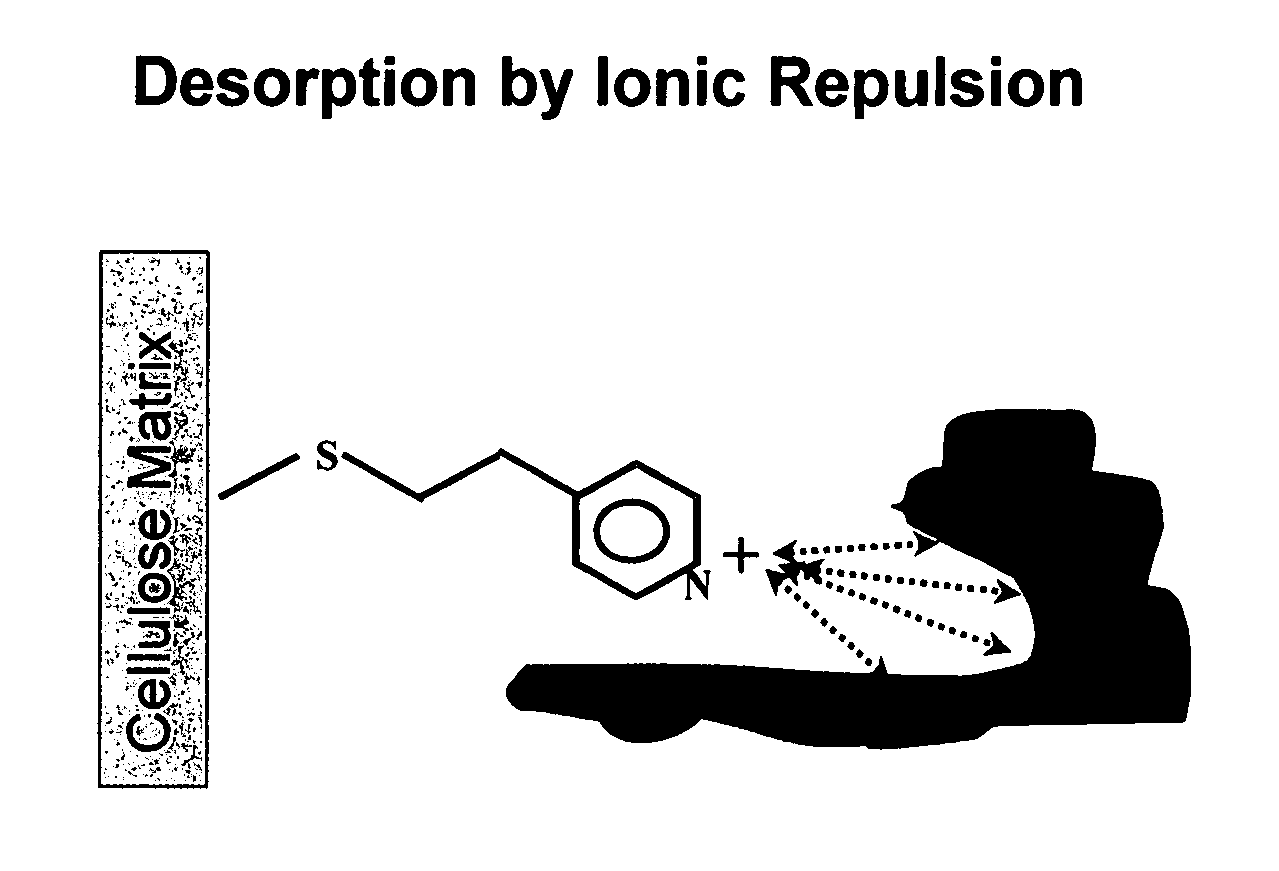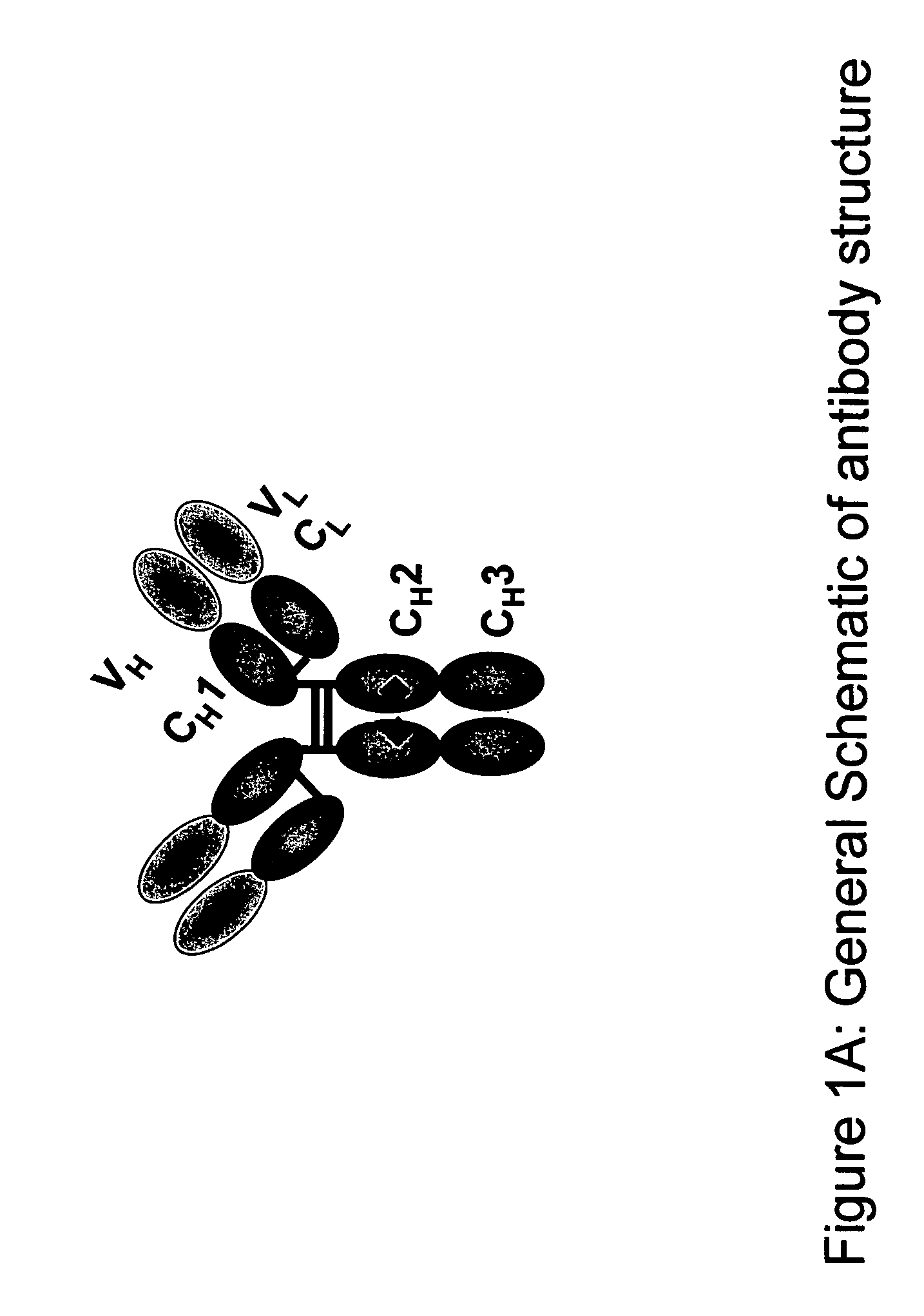Protein purification
a protein and purification technology, applied in the field of purification of desired proteins, can solve the problems of unsatisfactory composition for therapeutic purposes, difficulty in fusion proteins, and failure of one-step process to separate proteins from their fusion analogs,
- Summary
- Abstract
- Description
- Claims
- Application Information
AI Technical Summary
Problems solved by technology
Method used
Image
Examples
example 1
Fermentation Broth Clarification
[0112]Fungal cells were transformed and cultured according to the methods described in co-pending applications U.S. Ser. No. 60 / 373,889, entitled “DNA Sequences, Vectors, and Fusion Polypeptides for Secretion of Antibodies in Filamentous Fungi” filed Apr. 18, 2002, by Ward et al. and U.S. Ser. No. 60 / 411,540, entitled “DNA Sequences, Vectors, and Fusion Polypeptides for Secretion of Antibodies in Filamentous Fungi”, filed Sep. 18, 2002, by Ward et al., both of which are incorporated by reference in their entirety. Briefly, fungal cells that had previously been transformed with heterologous DNA encoding an immunoglobulin were grown in 50 ml of production medium called Promosoy special. This medium had the following components: 70 g / l sodium citrate, 15 g / l (NH4)2 SO4, 1 g / l NaH2PO4.H2O, 1 g / l MgSO4, 1 ml Tween 80, pH to 6.2 with NaOH, 2 ml / l Mazu DF60-P, 45 g / l Promosoy 100 (Central Soya, Fort Wayne, Ind.), 120 g / l maltose. The production media flasks ...
example 2
Protein-A Chromatography for Antibodies and Antibody Fragments Purification
[0115]Protein-A Chromatography (PAC) was performed using a 5 mL column containing Protein A Ceramic HypderD® F media (Ciphergen Biosystems). The column was equilibrated with 25 mM Tris and pH 7.7 buffer. A sample that had been adjusted to pH 7.7 was then loaded onto the column at 45 cm / h. The column was washed with 6 CV of 25 mM Tris, 500 mM NaCl, and pH 7.7 buffer. Antibody was eluted with 4.5 CV of 100 mM sodium citrate and pH 2.5 buffer flowing at 150 cm / h. Eluate containing antibody was collected and immediately neutralized with 1M Tris and pH 8.2 buffer. The chromatogram is shown in FIG. 3A.
[0116]Aliquots from the collected fractions were assessed on SDS-PAGE (FIG. 3B). SDS-PAGE was done according to manufacturer's instruction. Gels, molecular weight standards, and buffers were purchased from Invitrogen in Carlsbad, Calif. The gel used was NuPAGE® 4–12% Bis-Tris gel with MES running buffer. Samples were ...
example 3
mAb / mAb-GA Purification Using HCIC
[0118]Firstly, the fermentation broth was clarified as in Example 1. Basically, fungal cells were removed from culture broth by filtration through a cellulose pad as describe in Example 1. The filtered broth was concentrated approximately seven-fold by tangential ultrafiltration. Using a circulating pump, the broth was pressurized and flowed across a membrane made of regenerated cellulose with a 30,000 molecular weight cutoff (Prep / Scale™ TFF, Millipore). To remove particulates, the concentrate was centrifuged at 25,000 times gravity for 15 minutes, and the supernatant was filtered through a series of membranes, with each membrane having a smaller pore size than the previous, ending with 0.2-micrometer pore size.
[0119]IgG1 was purified from supernatant using hydrophobic charge induction chromatography (HCIC) (FIG. 4A). This was performed with the aid of a high performance liquid chromatographic system (AKTA™explorer 10, Amersham Biosciences) on a 4....
PUM
| Property | Measurement | Unit |
|---|---|---|
| load volume | aaaaa | aaaaa |
| load volume | aaaaa | aaaaa |
| load volume | aaaaa | aaaaa |
Abstract
Description
Claims
Application Information
 Login to View More
Login to View More - R&D
- Intellectual Property
- Life Sciences
- Materials
- Tech Scout
- Unparalleled Data Quality
- Higher Quality Content
- 60% Fewer Hallucinations
Browse by: Latest US Patents, China's latest patents, Technical Efficacy Thesaurus, Application Domain, Technology Topic, Popular Technical Reports.
© 2025 PatSnap. All rights reserved.Legal|Privacy policy|Modern Slavery Act Transparency Statement|Sitemap|About US| Contact US: help@patsnap.com



